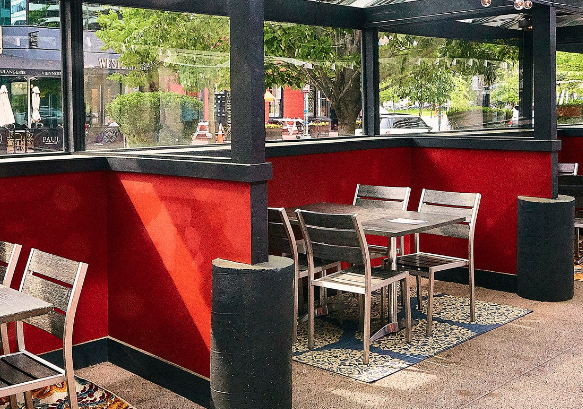Founding Farmers DC American eatery dishing Chic comfort cuisine
Founding Farmers DC has a covered outdoor patio with individual streetside stalls for an outdoor bistro feel and some uncovered open air tables right on Pennsylvania Avenue in downtown DC.
Join them at Founding Farmers DC
A full-service restaurant and bar majority owned by American family farmers. Their menus feature American-inspired food & drink made from scratch with thoughtfully sourced ingredients from farmers they know and trust.
Urban DC farmhouse
In their urban DC farmhouse, guests can gather around their handcrafted community farm dining tables or enjoy more intimate seating arrangements, including the popular silo-shaped booths.
Founding Farmers DC restaurant showcases original artwork, including a large flying Pegasus from artist Darla Jackson and our lamb mascot (who changes outfits with the seasons) by Noella Cotnam.
LEED Gold Certified design helps continue to operate as a 3 Star Certified Green Restaurant®, which exemplifies their devotion to aesthetic beauty and sustainability.
Guests are invited to make a reservation.
Located just three blocks west of the White House in the heart of Washington, DC on Pennsylvania Avenue.
Find out why they are the most booked restaurant in the nation on OpenTable.



